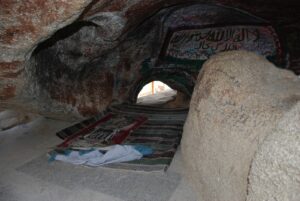8 Facts We Didn’t Know About Masjid Al-Aqsa
![]()
1. It isn’t just one mosque
There are in fact multiple mosques on the site that we know as Masjid Al-Aqsa. We tend to think of Masjid Al-Aqsa as the building at the southernmost corner of the mosque. In actual fact, that is the Qibali Mosque – so called because it is the closest to the Qiblah. The whole complex is known as the Blessed Masjid Al-Aqsa. It is also referred to as Al-Haram ash-Sharif (the Noble Sanctuary).
2. It is mentioned in the Qur’an
In fact, the Ka’bah and Masjid Al-Aqsa are the only two masjids mentioned in the Qur’an – and they are even referenced side by side when Allah (swt) speaks of the Night Journey and Ascension:
‘Exalted is He who took His Servant by night from al-Masjid al-Haram to al-Masjid al-Aqsa, whose surroundings We have blessed, to show him of Our signs. Indeed, He is the All-Hearing, the All-Seeing’. [The Noble Qur’an, 17:1]
3. The original Dome of the Rock looked very different
The Dome of the Rock was built by the Ummayad ruler Abdul Malik ibn Marwan. It was originally wooden with either a brass, lead or ceramic cover. The iconic dome we all know was built almost a thousand years later during the reign of the Ottoman ruler, Sulaiman the Magnificent. The distinctive gold layer was added to the dome along with the Ottoman tiles to the facade of the building.
4. The complex is also a burial ground
Though there is no accurate record of who and how many have been buried here, the burial ground in Al-Haram as-Sharif is the resting place for many prophets (as) and Sahabah of the Holy Prophet (saw).
For example, Ubadah ibn Samir (ra), who was the first Islamic judge in Masjid Al-Aqsa, is buried in the Bab ar-Rahmah Cemetery. This is the third most prominent graveyard in the Islamic world, after two famous graveyards in Makkah and Madinah – and alhamdulillah, it has been recently renovated by your donations through Muslim Hands.
5. It once held a legendary minbar
Imad ad-Din Zengi, a member of the Turkish Zengid dynasty, had a special minbar built to be installed in Masjid Al-Aqsa. This minbar was not only beautiful, but it was made without using a single nail or bit of glue. Sadly, Imad ad-Din did not live to see the victory, but his protégé Salahuddin fulfilled the wish of his teacher, and after liberating Jerusalem for the second time in the history of Islam, installed the minbar.
6. The site was once used as a dumping ground
When the Romans exiled Jewish people from the city, the mainly Roman inhabitants used the area of Masjid Al-Aqsa as a garbage dump. When Umar (ra) opened city to Islam, he cleared the rubbish with his bare hands. He also ended the centuries-old exile of Jewish people, giving refugee families the right to reside in Jerusalem once again.
7. Al Ghazali lived and wrote his greatest work there
One of the most famous scholars in Islamic history, Imam Abu Hamid Al-Ghazali, spent a period of his life in Masjid Al-Aqsa where he wrote what is widely regarded as his greatest work, the Ihyaa Ulum Al-Din (The Revival of Religious Sciences). A building in the masjid marks the site of his old room.
8. It has been burnt down
In 1969 the entire Qibali Masjid was burnt down. The mosque has since been rebuilt, but this incident from the not-so-distant past shows just how important it is to look after the third holiest site in Islam. In fact, in 2019, fundraising began to replace the entire lighting system in the Qibali Masjid, because the old system had not been replaced in 30 years and posed a risk of fire.



